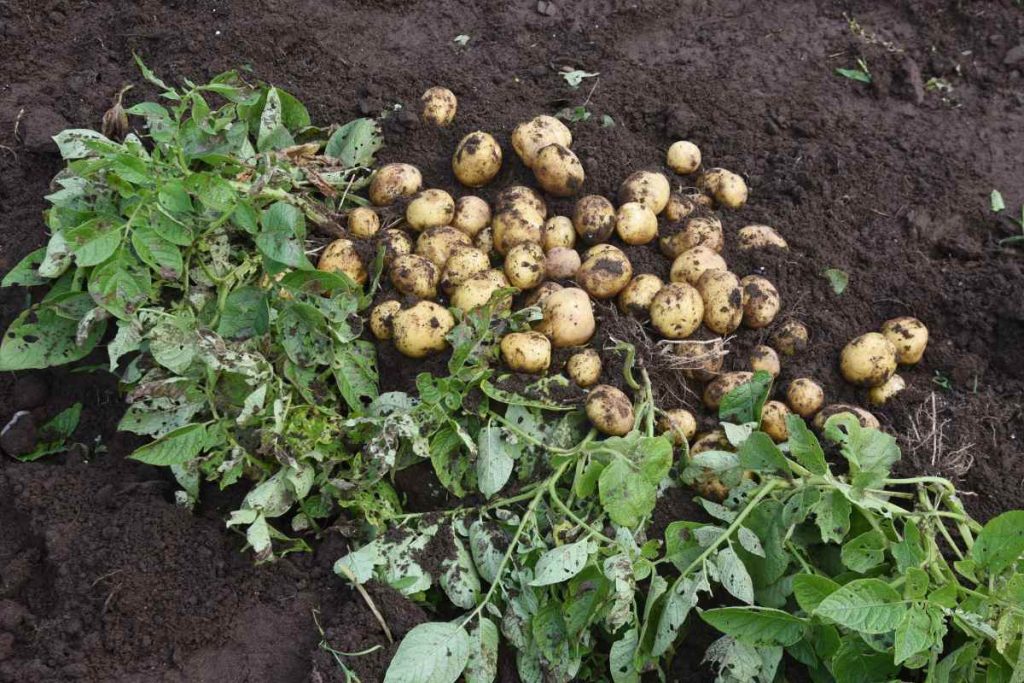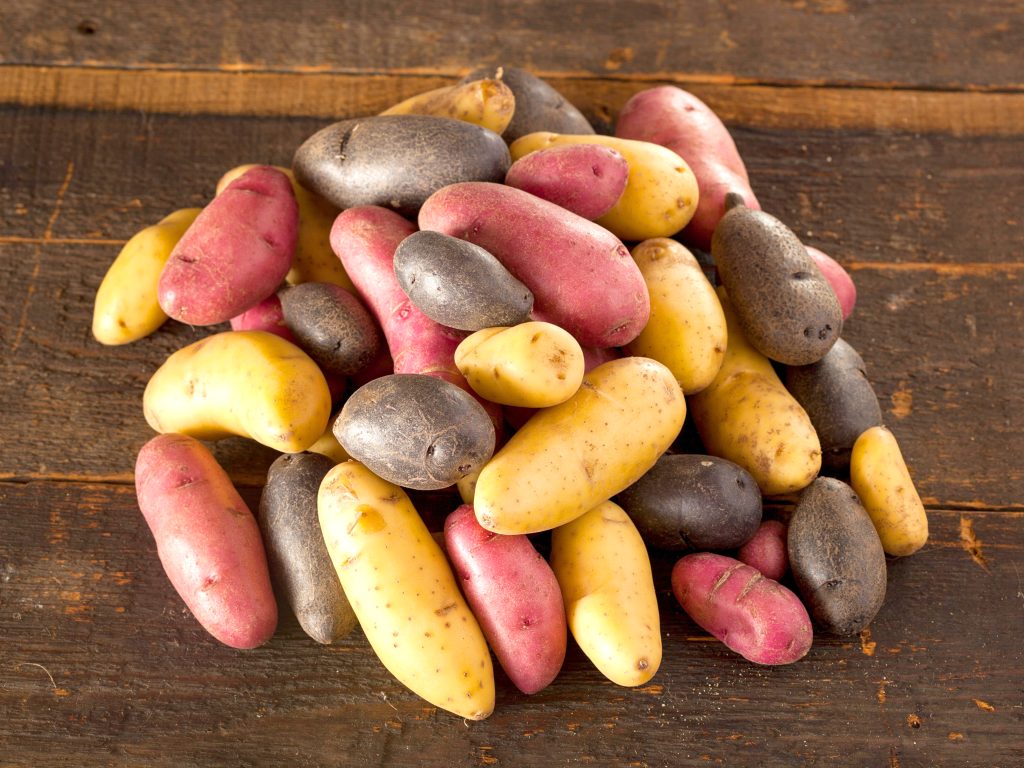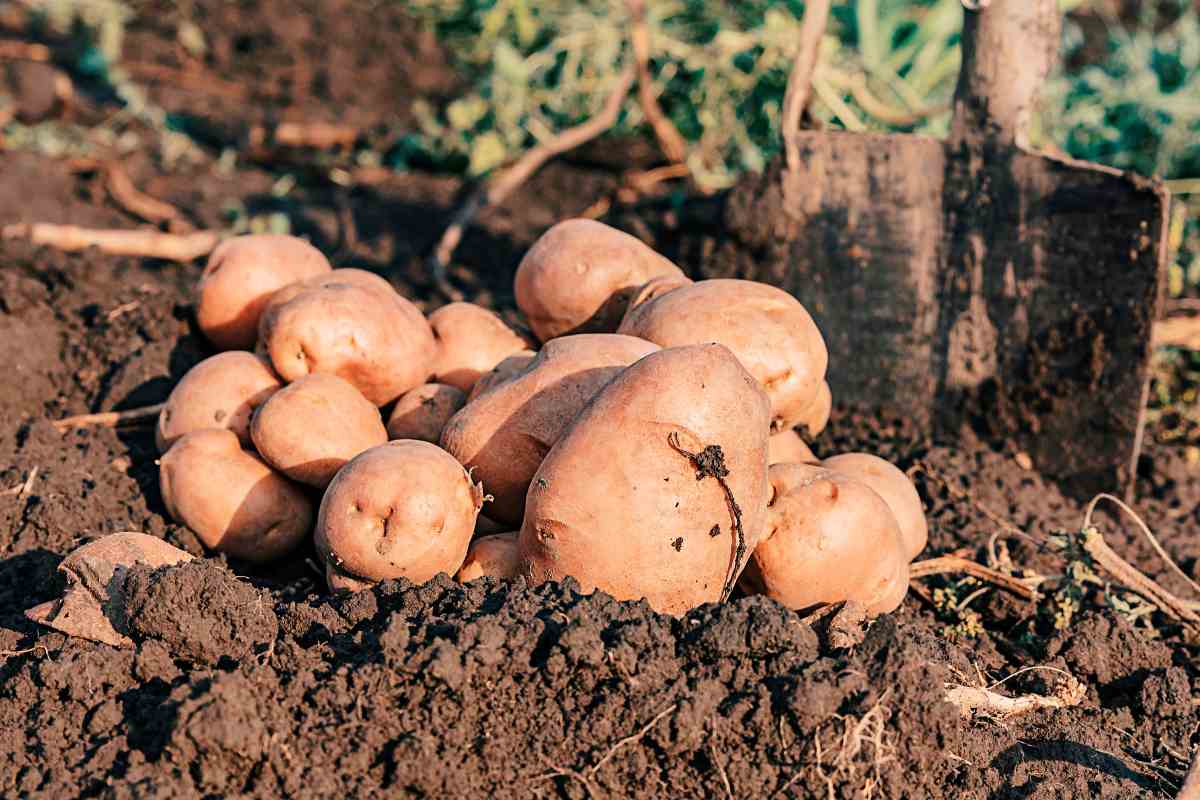
How to Plant, Grow and Harvest Potatoes
An easy-to-grow and highly versatile vegetable, potatoes are a favourite for gardeners. Growing potatoes is easy, and there are many different varieties to choose from. From early to late season harvests, there is a wide range of different potato varieties. A great feature of this favoured root vegetable is that they can be stored for months in a cold, dark and well-ventilated area – which is handy with the high yield you will receive! If you are looking to grow potatoes this summer, check out our details on how to grow and harvest potatoes. This highly adaptable, delicious, and popular crop is beloved worldwide. From perogies to poutine, potatoes are key in many of our favourite dishes!
Table of Contents
Indeterminate versus Determinate Potatoes
What are indeterminate and determinate potatoes? What are the differences?
Determinate Potatoes
Determinate potatoes are fast-growing and will produce early in the season, around 70-90 days after planting. These fast-growing potatoes produce their tubers at soil depth. Tubers grow in one single layer just below the surface. Hilling is not required for determinate varieties since they grow in one layer, however, mulching can be beneficial as you want to make sure your potatoes are not exposed to light.
Indeterminate Potatoes
On the other hand, indeterminate potatoes are late-season harvesting, with a growth time of 80-120 days. Unlike the determinate potatoes growing at a singular level, indeterminate potatoes may grow additional layers of potatoes. Therefore, these potatoes require hilling. You will receive a higher yield from indeterminate potatoes as they are grown longer, and many will produce larger tubers.

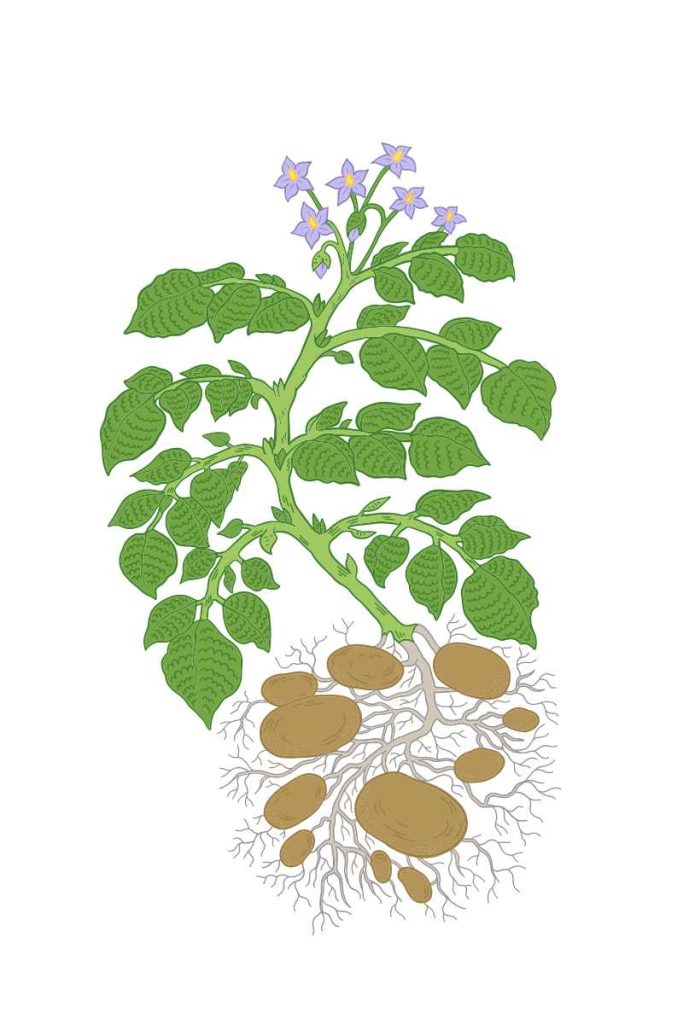
Certified Seed Potatoes
Planting potatoes is done by planting certified seed potato tubers, unlike other vegetables which are grown from seed. As a staple food source in Canada, potatoes are a highly regulated crop by the Canadian Food Inspection Agency (CFIA). Through the growing and harvesting process, all seed potato growers in Canada have their fields and crops inspected for health and then certified. A nuclear stock seed potato can only be grown and harvested for up to 7 seasons. Each year all seed potato stocks are tested for viruses to ensure the health of the crop against issues like ring rot. At Florissa, all the potatoes we sell are certified and disease-free. When choosing seed potatoes for planting, look for certified tubers to ensure a healthy and successful harvest.
Potato Varieties
There are different types of potatoes to choose from, with different yields and harvest times. A popular red-skinned variety is Chieftain. It is classified as a determinate potato – growing in a single layer under the surface. Chieftain is popular due to its attractive appearance and an early harvest option of nugget potatoes. After a few weeks, you will enjoy a yield of large tubers with your main harvest. For those French fry and chip lovers out there, Chieftain is perfect!
When choosing a russet potato, a much-loved variety is the classic Pacific Russet. It is an indeterminate variety, producing many tubers on different growth levels beneath the surface, providing growers with a plentiful yield. As an early-season harvest potato, make sure to try this potato in all your French frying, boiling, and baking dishes!
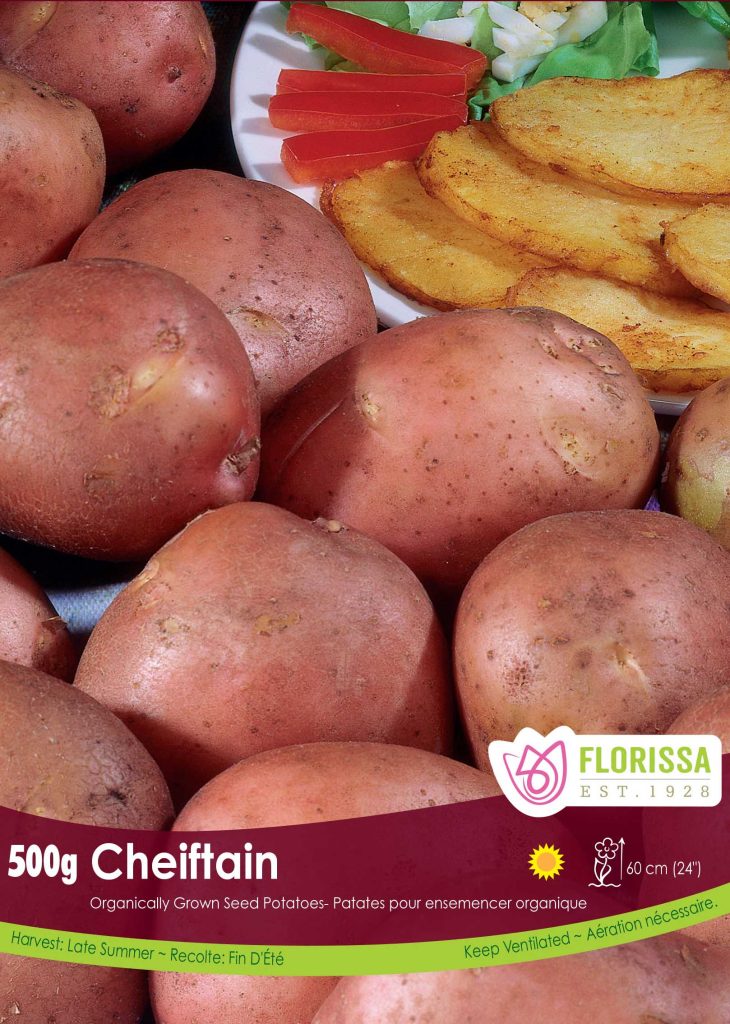

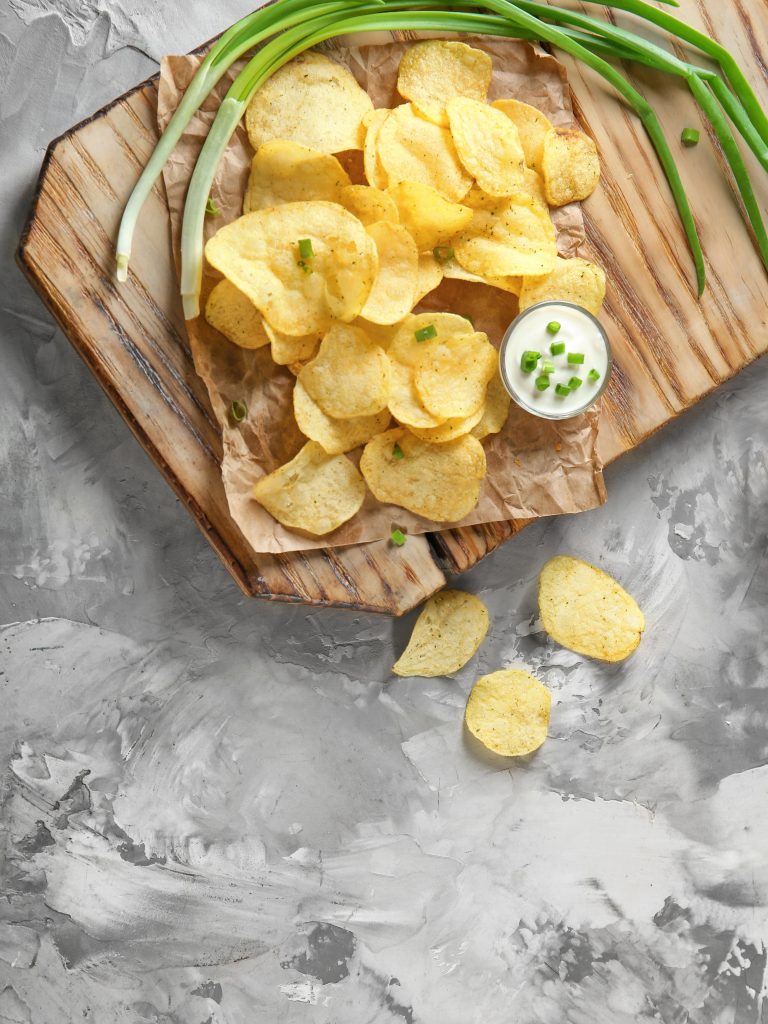
Organic potatoes are very popular. Try the organically grown, mouth-watering Warba. For potatoes early in the season, Warba fits the bill. This early nugget variety grows a high yield of gems for roasting and steaming. As a determinate variety, Warba will produce a main crop of round tubers with white skin and flesh, with deep red eyes. Tasty for summer potato salads and baking.
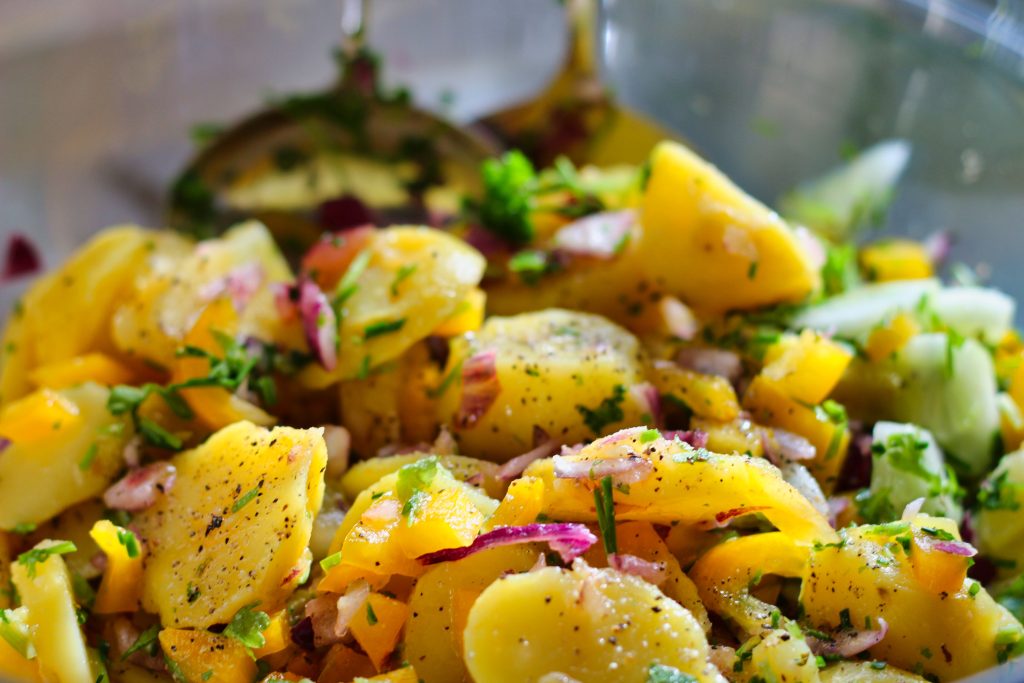
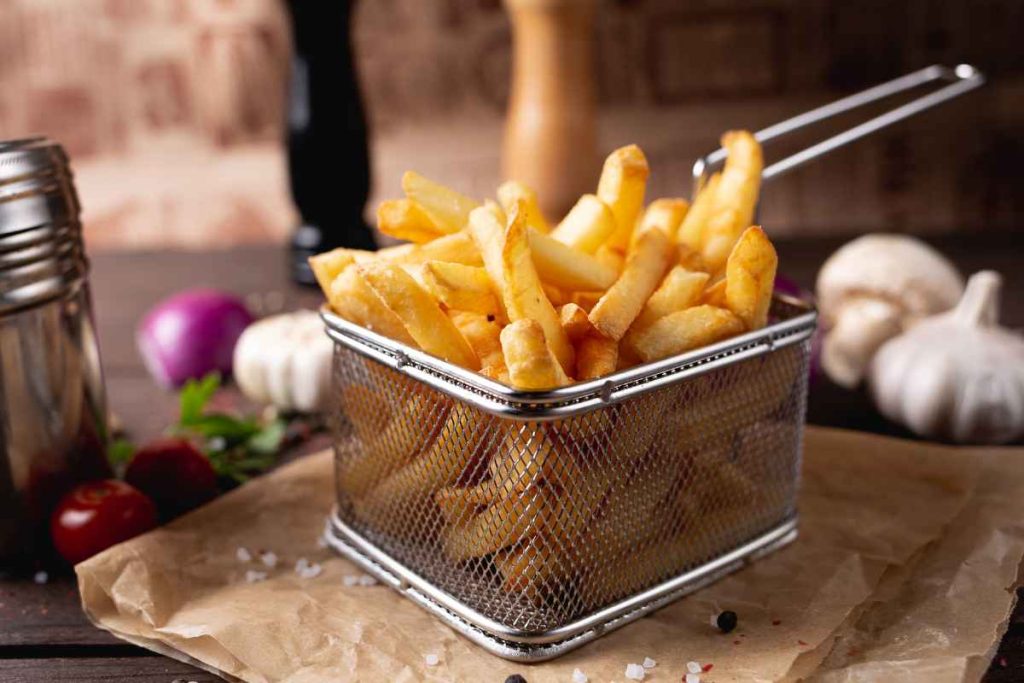
Gourmet varieties are always fun to grow. From Prince of Orange with its buttery-tasting orange-yellow flesh, to Russian Blue with its deep purple flesh and nutty flavour. A must-try gourmet potato is AmaRosa. This creamy and nutritious potato has red skin and deep red/pink flesh. The gorgeous colour of the potato flesh does not fade with cooking. With a sweet and creamy taste, AmaRosa fits well with many different recipes, our favourite is oven fries. AmaRosa is an indeterminate variety with a mid-season harvest, producing a high yield of oblong and slender fingerling potatoes.
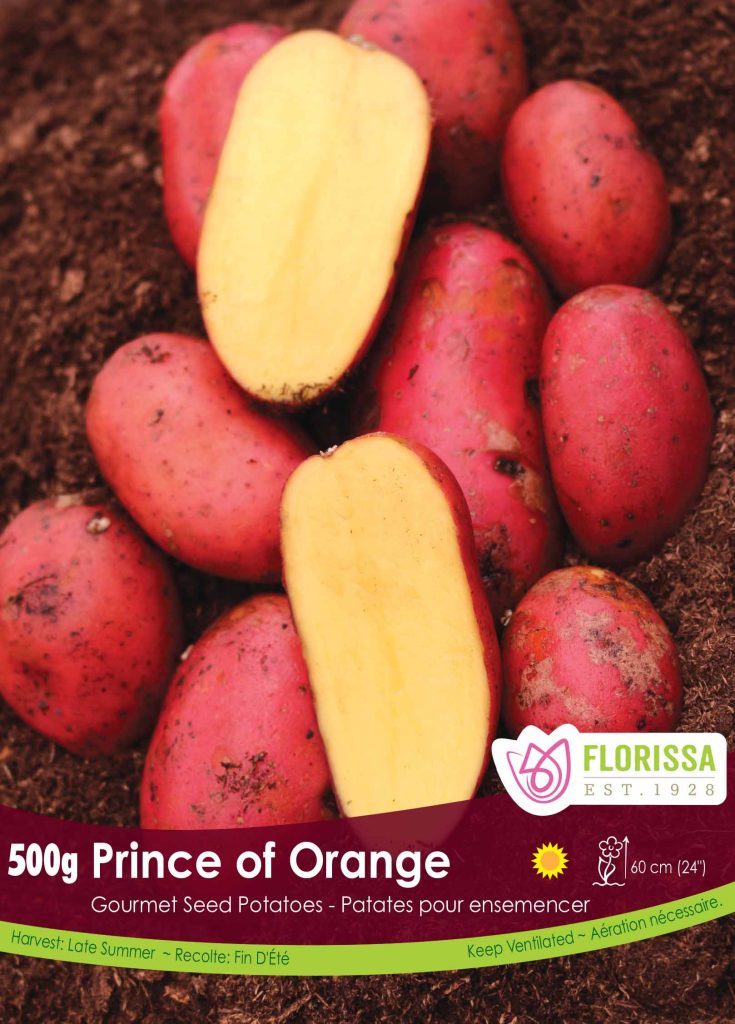


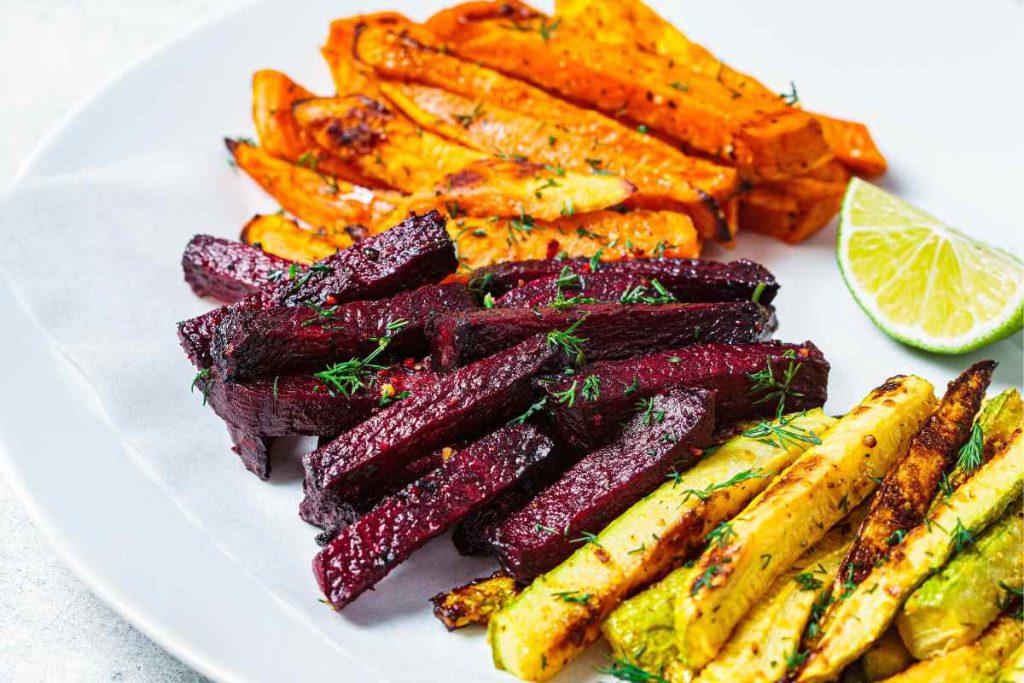

New – Nugget – Creamer Potatoes
You do not have to wait until the end of the growing season to harvest some of your potatoes. All potatoes can be grown and harvested as new potatoes. When harvested early, small new and nugget potatoes’ sugars have not completely converted to starch, and therefore are very tasty small morsels that are excellent for boiling, steaming, and roasting. They have a lovely sweet, firm, and creamy texture and thinner skin. Harvest new potatoes 2-3 weeks after flowering. Normally, potatoes would be harvested at the end of the plant’s lifecycle when the greenery and flowers have turned brown and withered. New potatoes do not store well, so make sure to eat them in a timely manner. Creamer potatoes, also known as baby potatoes, are special varieties of potatoes that are harvested very early, even before nugget potatoes. These young spuds cook quicker and are perfect for mini smashed potatoes and other gourmet recipes.

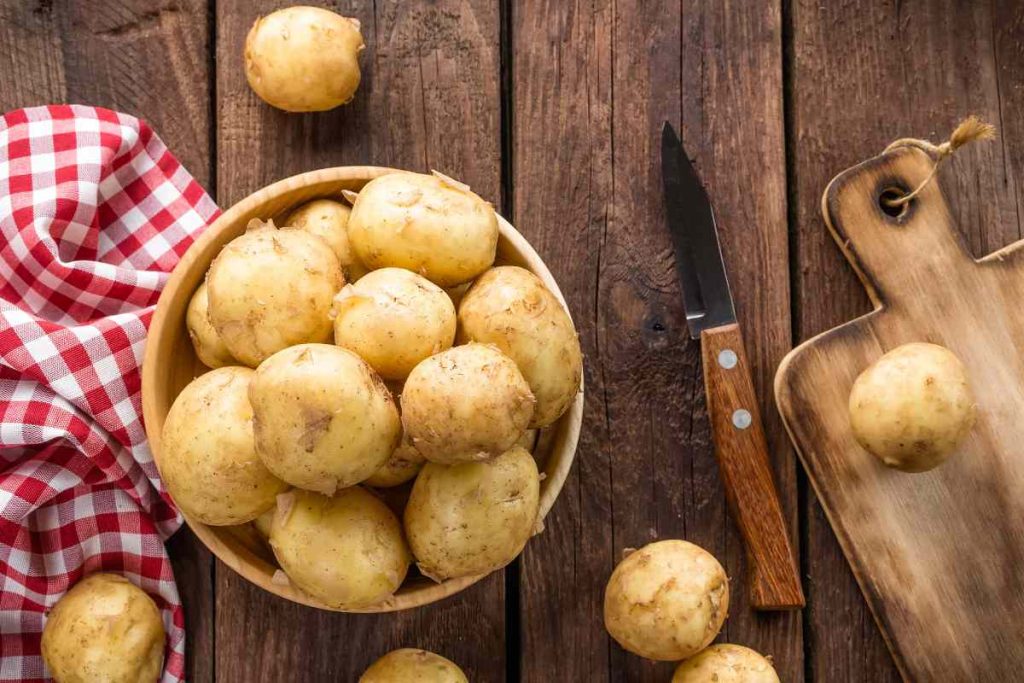
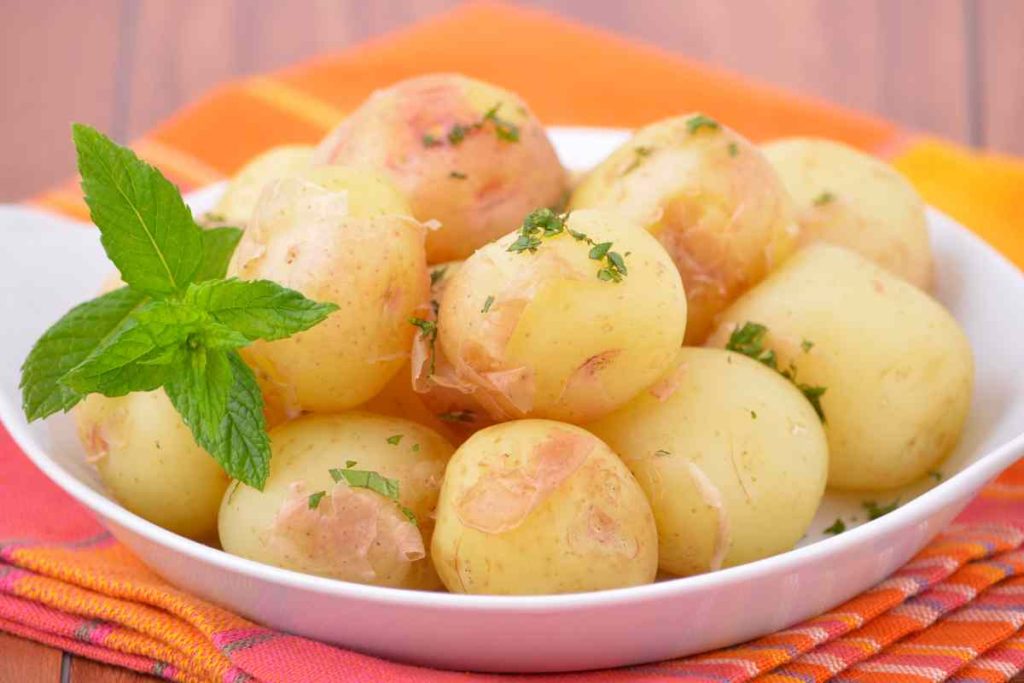
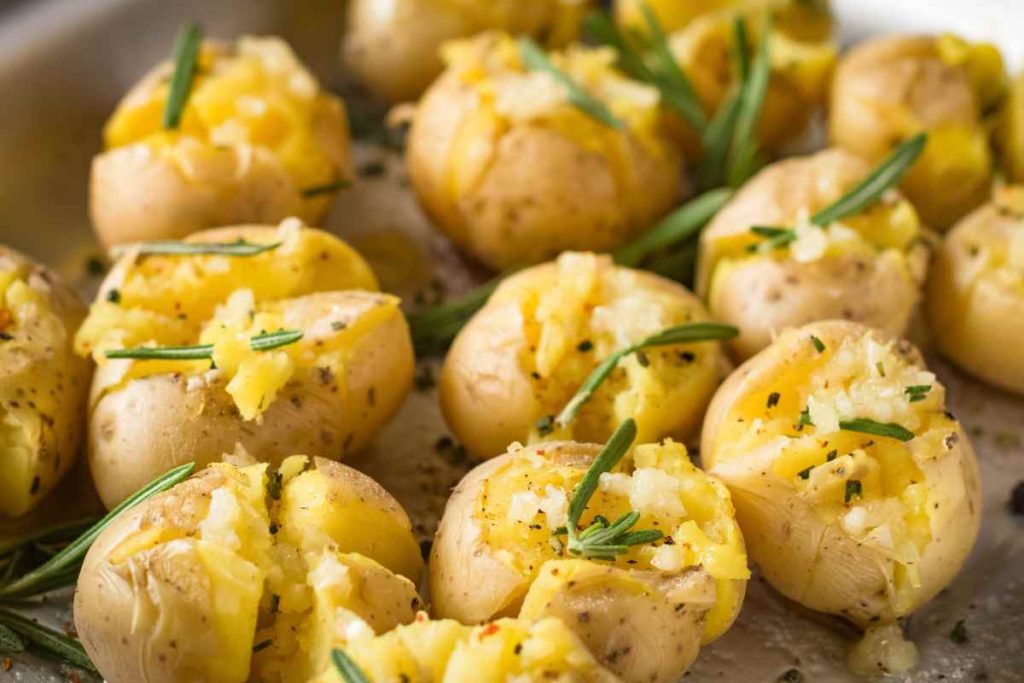
Check out an extensive list of all of the potatoes Florissa has to offer including russet, red, white, yellow, organically grown, nugget, and creamer potatoes.
How to Grow Potatoes
When growing potatoes, there are a few different avenues you can take. Of course, you can plant them directly into the ground, but there are also options to grow the potatoes in bags, in containers, and in raised garden beds. Growing potatoes in containers and potato grow bags have benefits. For gardeners with limited space, containers and bags are an excellent solution.
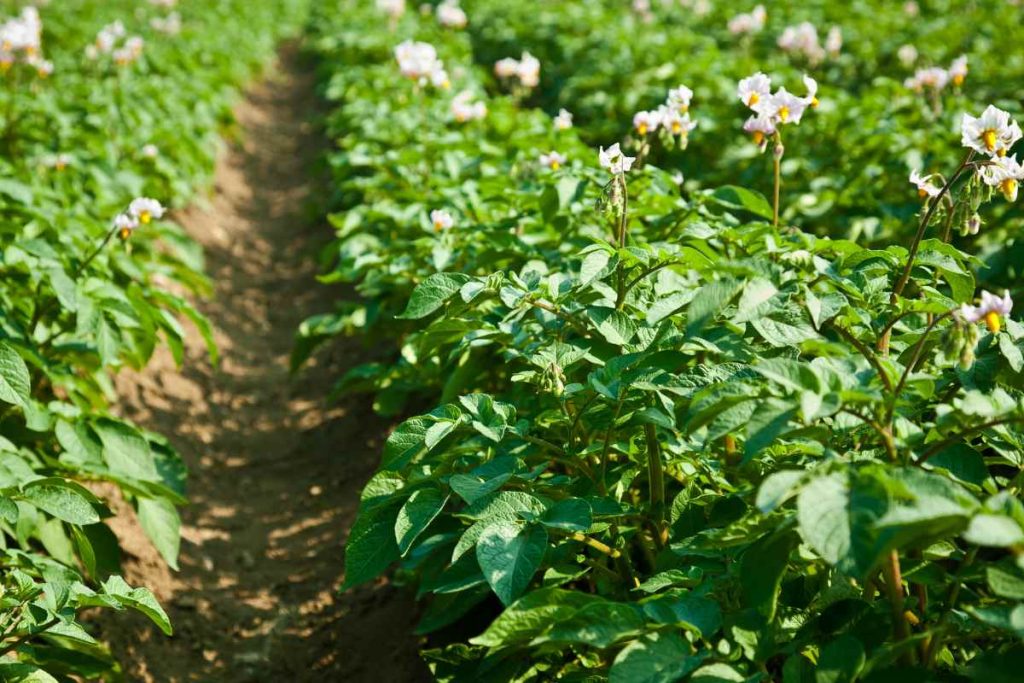

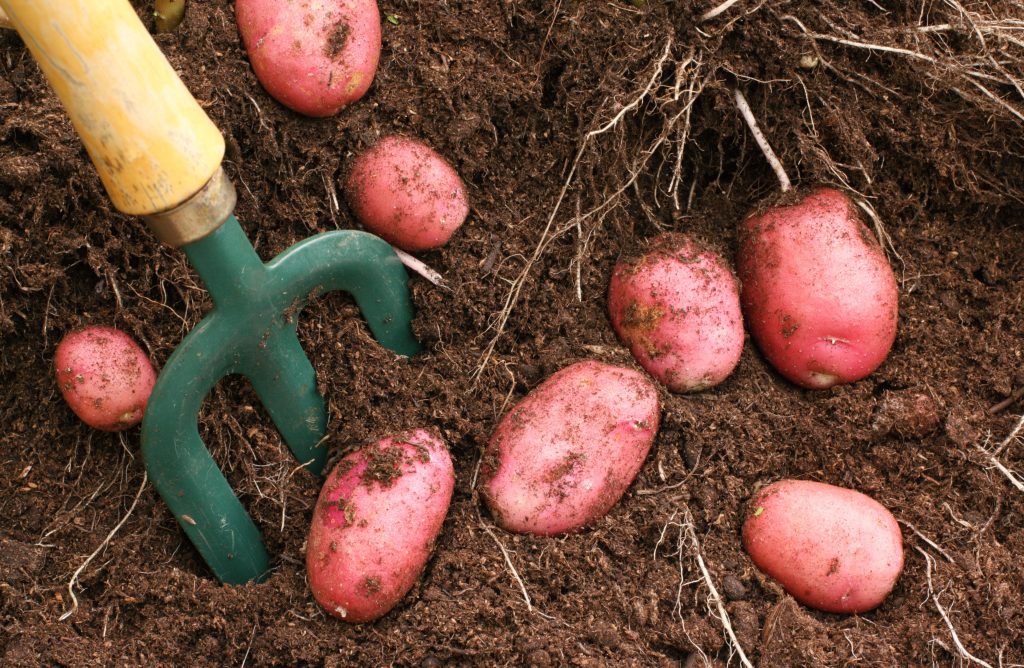
How to Plant Potatoes
Be sure to select certified seed potatoes when choosing to plant potatoes. For planting in the ground, in containers, or in bags, the basics are the same. Three to four weeks before planting, place the tubers in a bright, frost-free area to sprout. This process is known as chitting potatoes. When planting smaller potatoes with sprouted eyes, they can be planted whole. If a potato is larger, we suggest you cut the potato in half or quartered, making sure that there are healthy sprouts on each portion. When cutting potatoes, leave the potatoes in a warm dry area for a day or two to let the cut area cure to prevent rot.
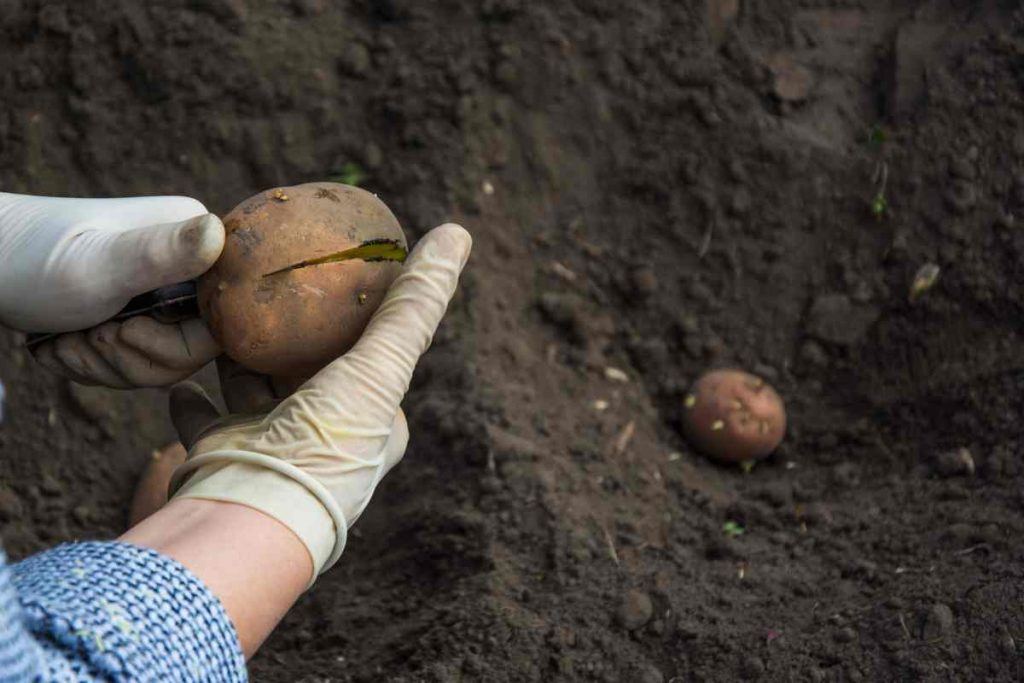
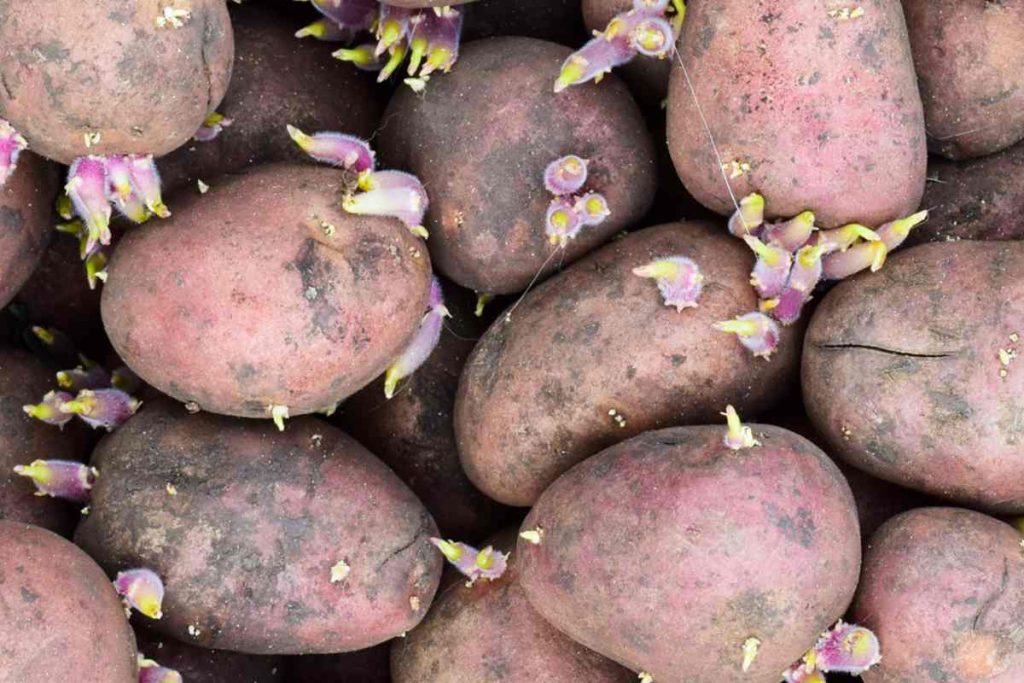
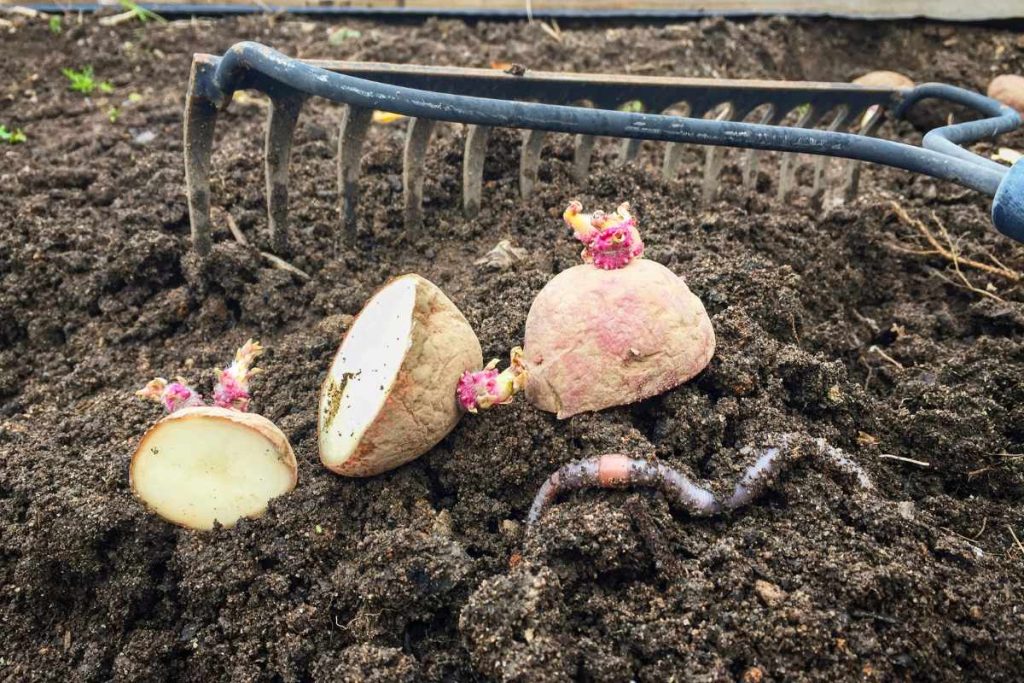
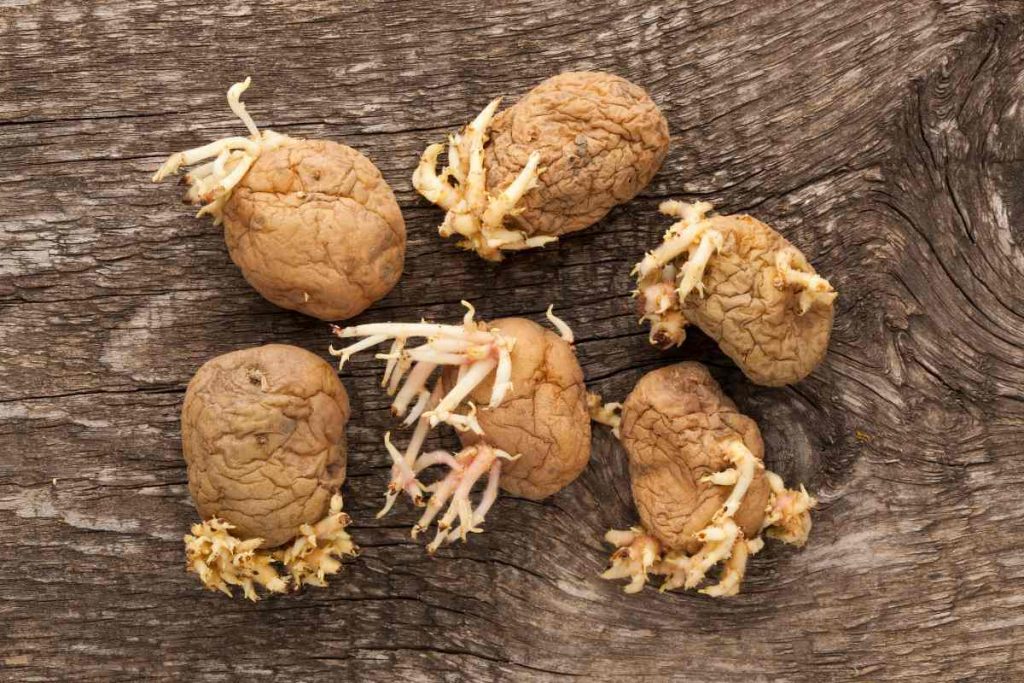
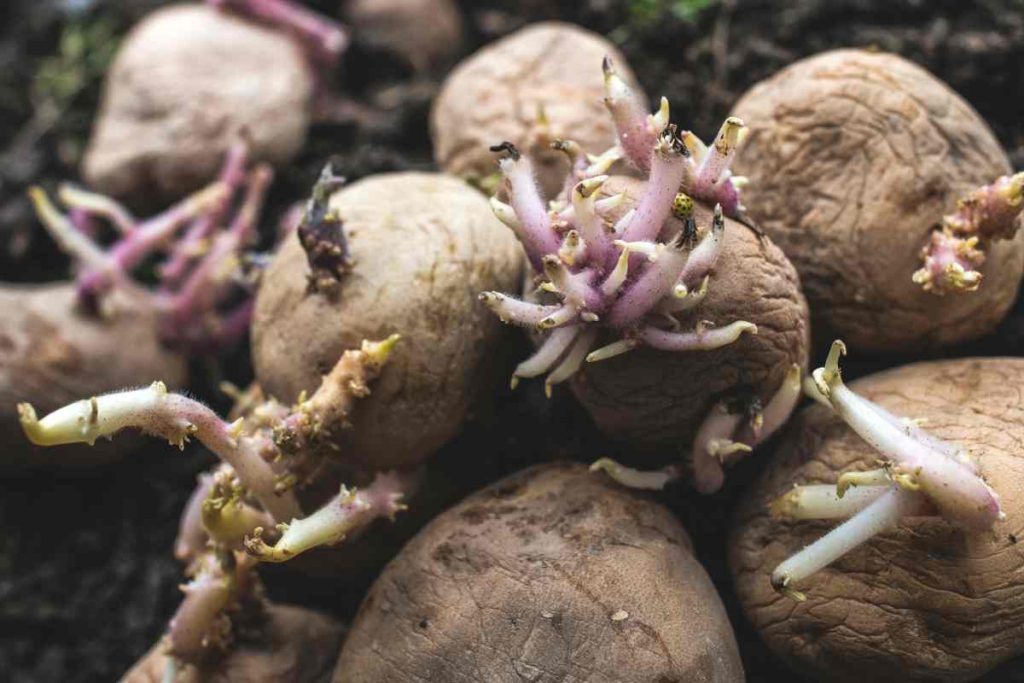
Grow potatoes in a full-sun area with well-draining soil. When planting in rows, keep the rows 3-4 feet apart. In a bucket or bag, 4-5 potatoes is an ideal number. Remember, plants produce many potatoes, so it is best not to crowd the pots and plant too many. To plant, choose a full sun area and place tubers 12 to 15 inches apart, and 15 cm (6”) inches deep. If you choose to fertilize, sprinkle balanced slow-release fertilizer around the tubers before covering potatoes with soil at the planting stage. Shoots will start to emerge from the soil in a few short weeks. When your potato growth is approximately 6 inches tall, start to hill your potatoes by mounding several inches of soil around them, covering the stem and the lower levels of leaves. Once your potato shows an additional 6 inches of growth above the surface, hill the potatoes again. Keep hilling your potatoes as they grow. Make sure the tubers are never exposed to the sunlight. If exposed to sunlight, your tubers may turn green, making them harmful to eat.
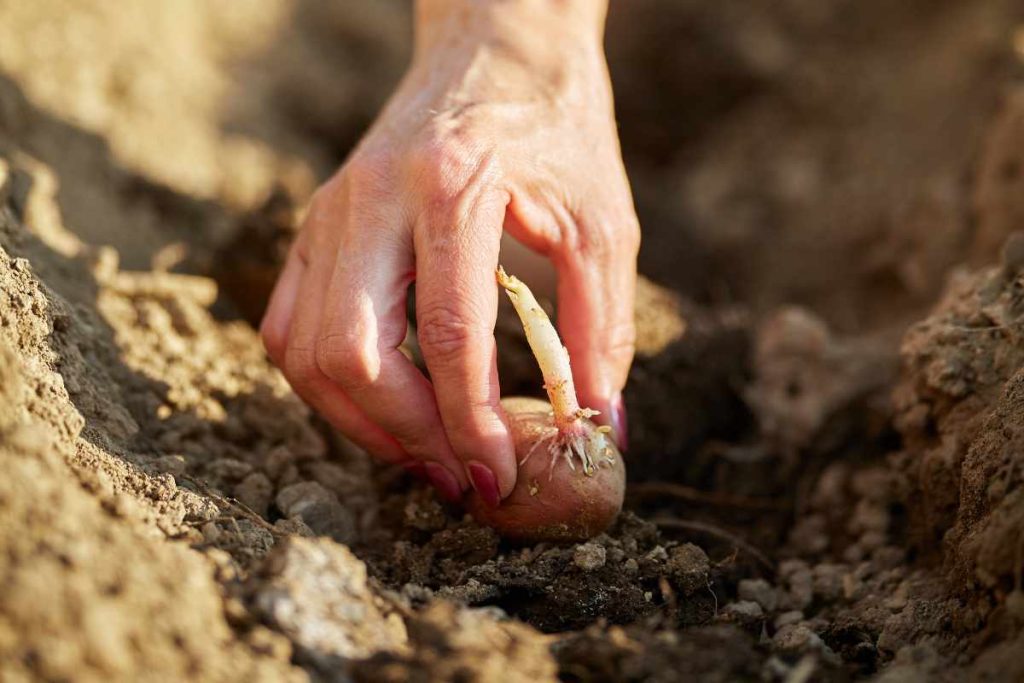
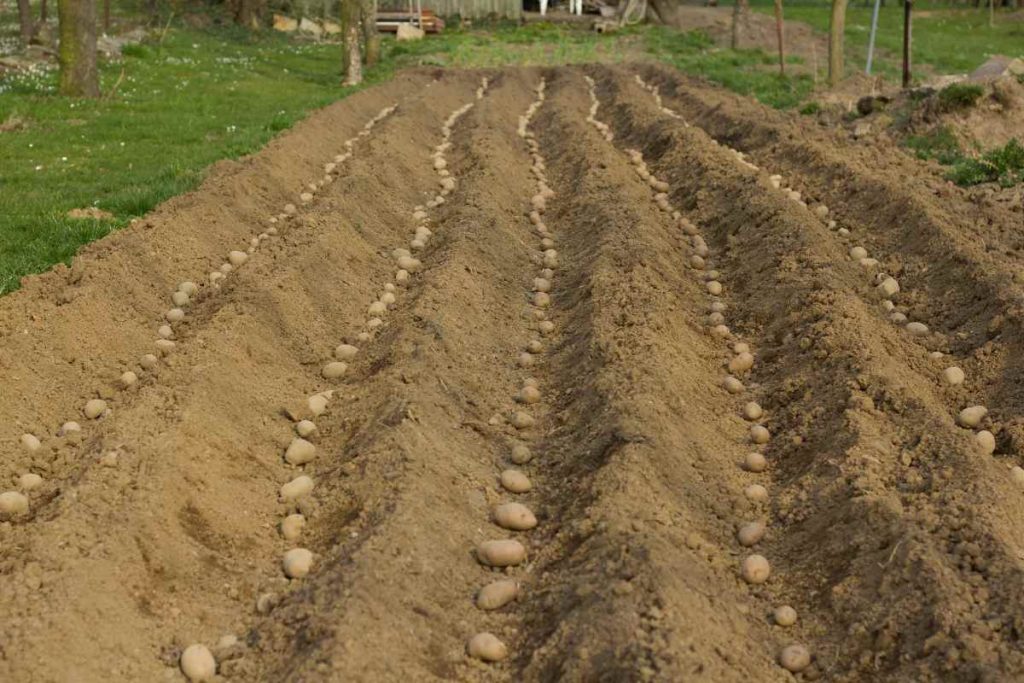
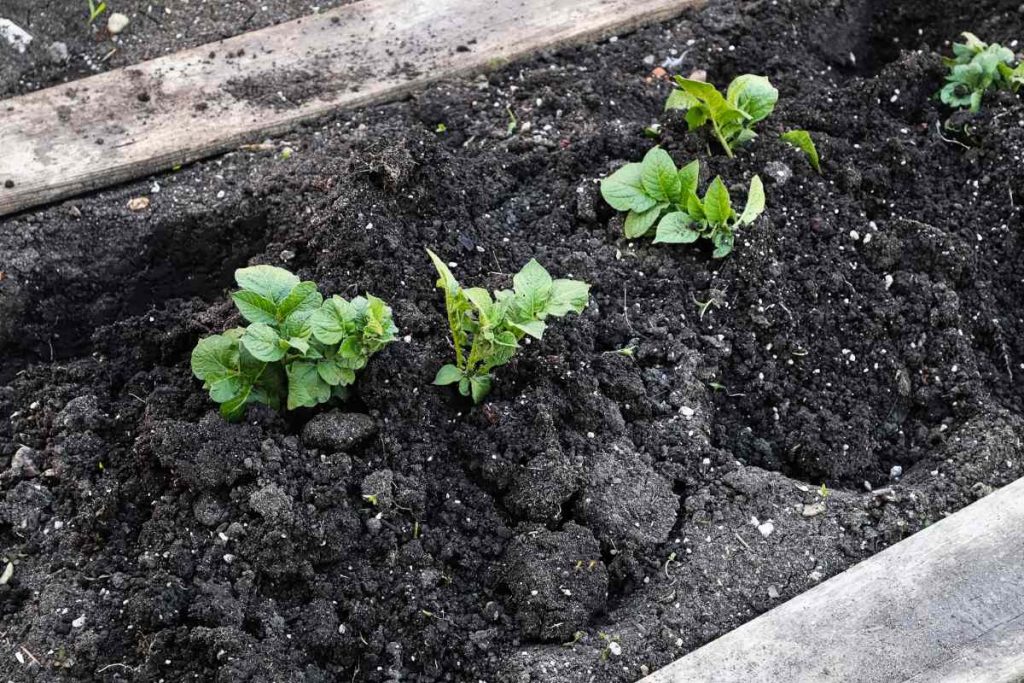
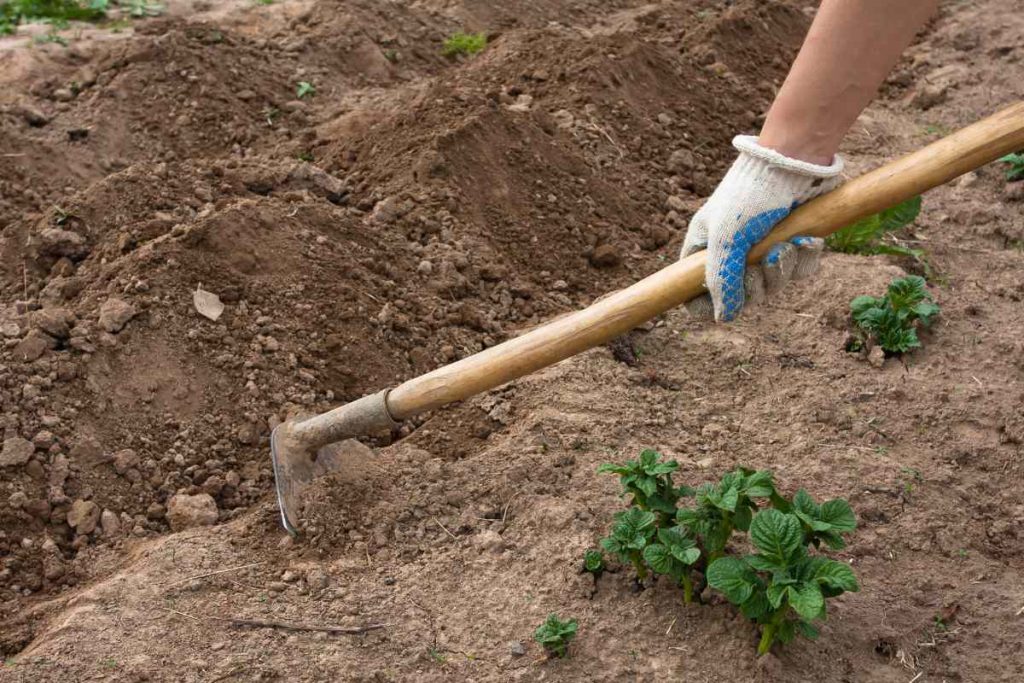

Water is very important to the growth of potatoes. They are a thirsty crop. Make sure to check your potatoes each day to ensure they are not drying out. When growing in containers be mindful to water more often as they will dry out quicker.
Growing Potatoes in Containers
If you are strapped for space, opt for containers. Save space and keep your potato plants close at hand on your patio or balcony. As growing potatoes is a rather easy crop to deal with, it is a great choice for novice gardens with little space. If you have a larger garden, containers are great for you as well, as they increase the space to plant! There is no hard and fast rule for which type of container you should use. Buckets, totes, and plastic garbage cans would all be perfectly suitable choices for growing potatoes. Whichever container you choose, it is very important to drill drainage holes into the bottom. Make sure you remember this step of ensuring good drainage, as potatoes will not be successful in soggy waterlogged soil.


Growing Potatoes in Bags
A great alternative for small-space potato growing is growing in bags. There are many different types of potato growing bags you can buy at garden centres or online. To save money, you can make your own, or use repurposed materials. An easy choice is using an old burlap sack, and simply rolling down the top. You can also use hefty compost bags or create a bag out of garden fabric with a few staples. As the planted potatoes grow, continue to hill with additional soil. When the soil level rises higher, you can start to unfurl the bag to allow for additional soil for hilling.
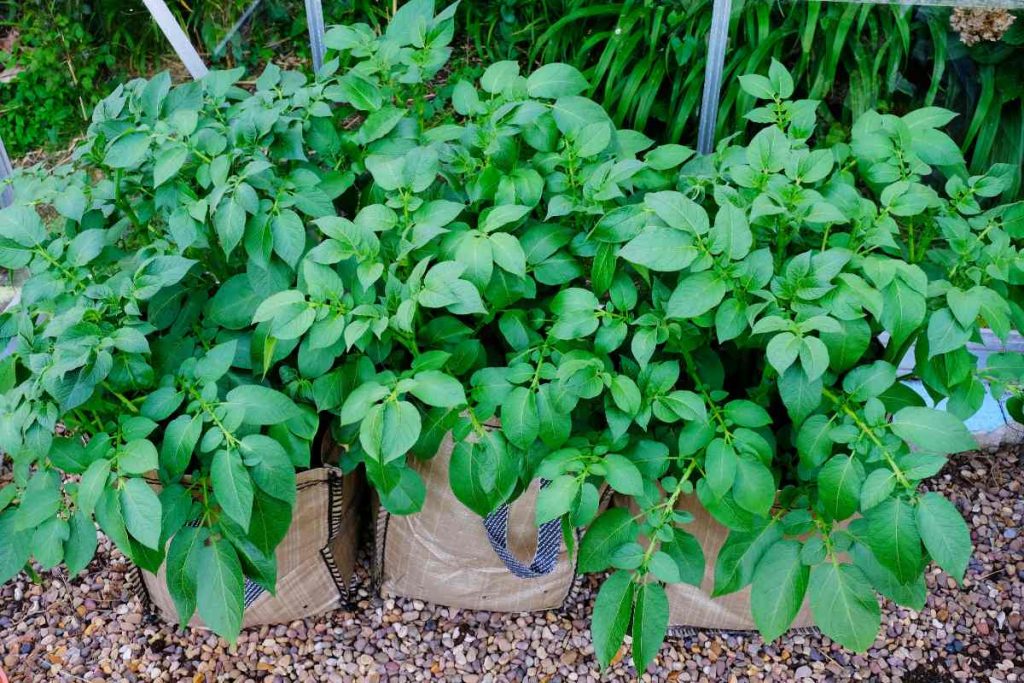
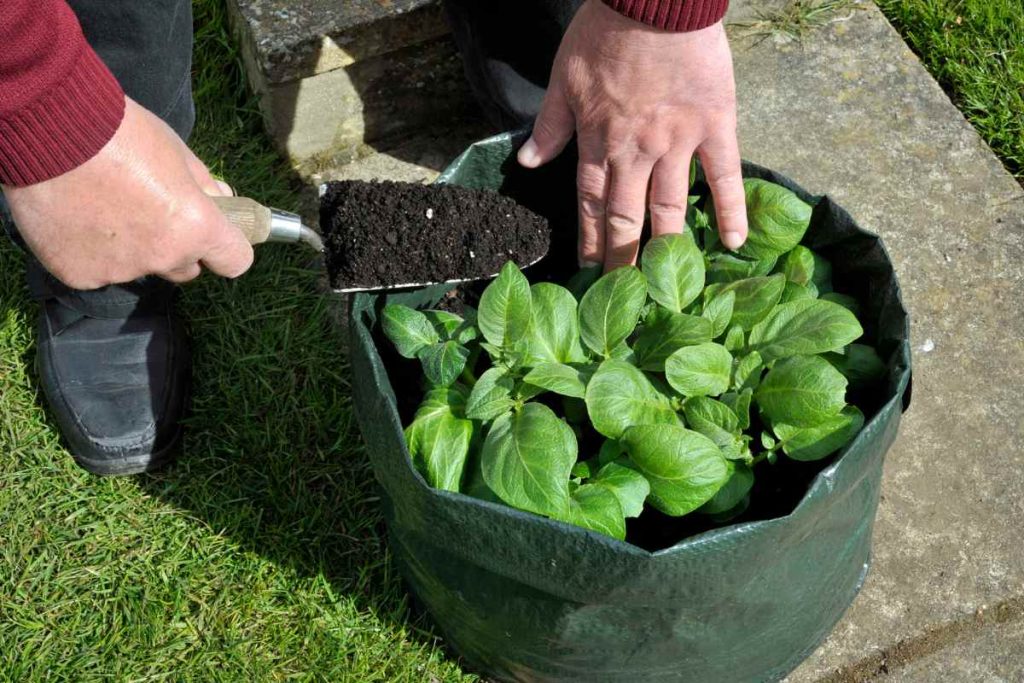

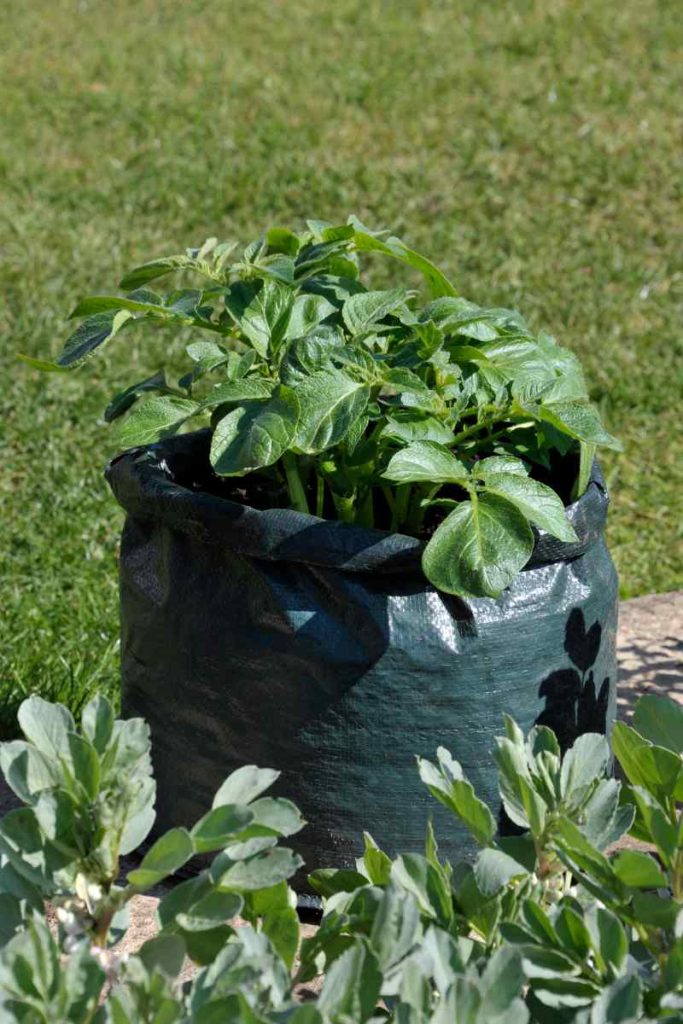

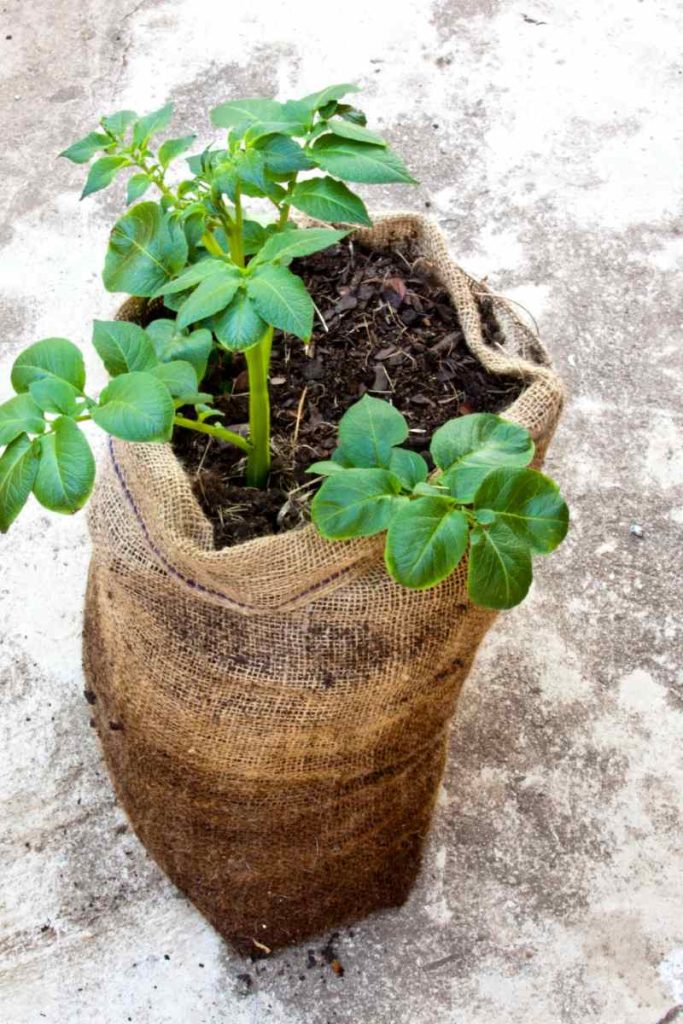
Harvesting Potatoes
After approximately two months or so after planting, clusters of small flowers will appear on your potato plants. The flowers and foliage determine when to harvest potatoes. When the flowers have faded and the leaves have wilted, wait 1-2 weeks before digging to allow for the skins of your fully mature potatoes to thicken.
Use a garden fork to gently loosen the soil when digging potatoes up. Typically, your potatoes will be 4-6 inches beneath the soil. If grown in containers or bags, harvesting your potatoes can be a bit easier, as you can tip your container or bag onto a tarp and sort through to find the spuds. Be careful not to scrape or cut the tubers when digging them up. Some store-bought growing bags have an opening on the side for easy harvest.
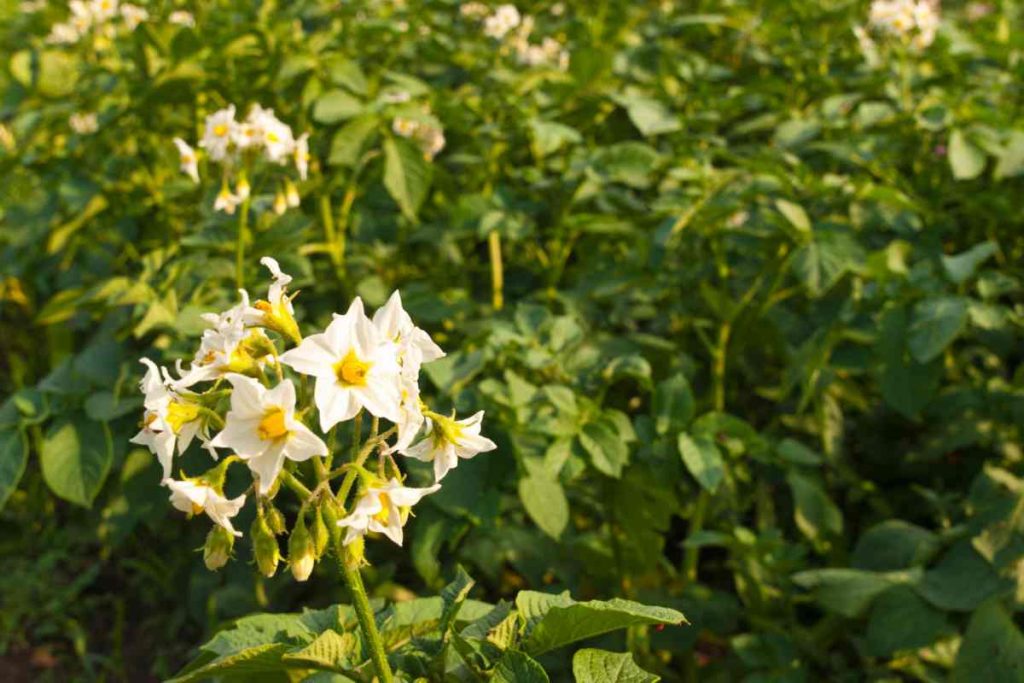

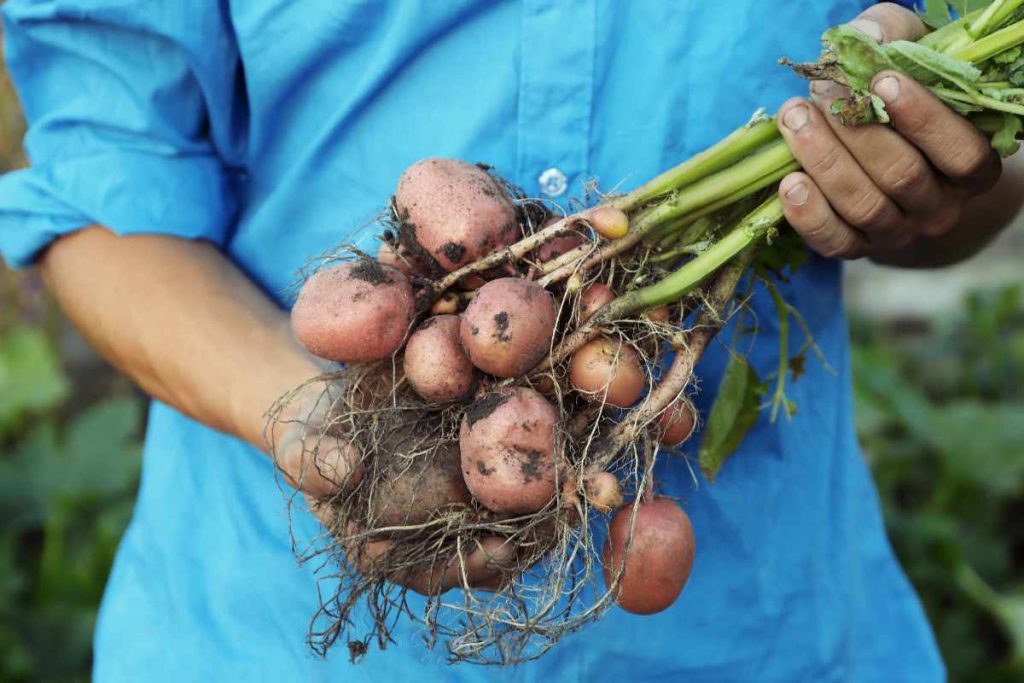
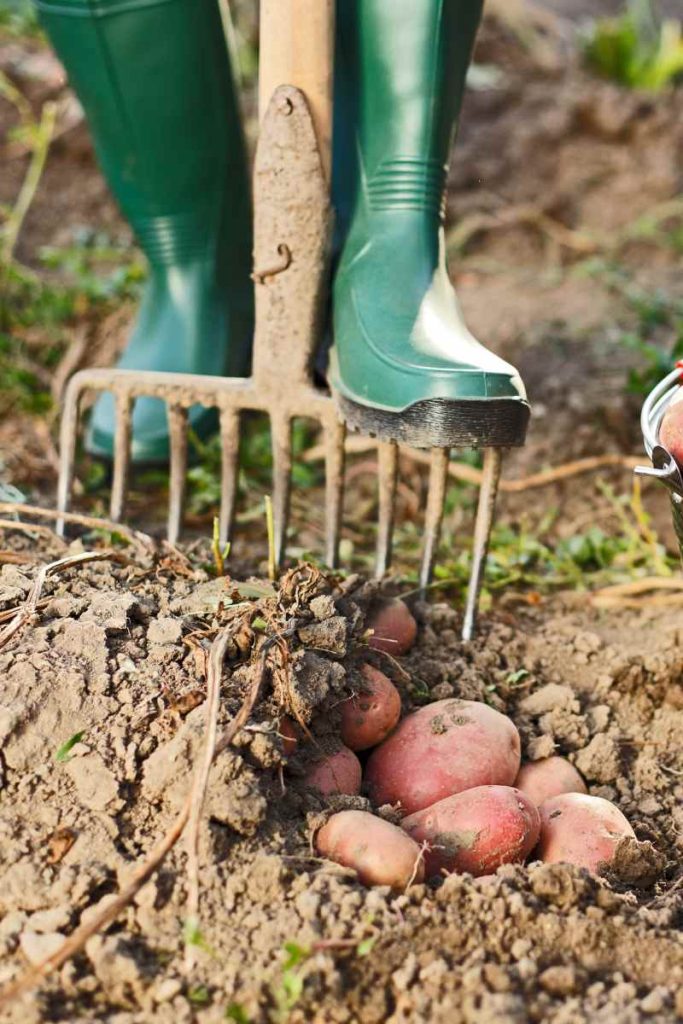

If you are planning on storing your potatoes, do not wash them. Simply lightly dust off the surface. Store your potatoes out of sunlight, in a cool, dry well-ventilated location. An ideal temperature for storage is around 3-5°C (38-41°F). If you have any potatoes with damaged skin, make sure to eat those right away, rather than putting them into storage. Store potato tubers away from onions, apples, and pears. The ethylene gas produced from ripening fruits, which is harmless to people, can cause potatoes to spoil.

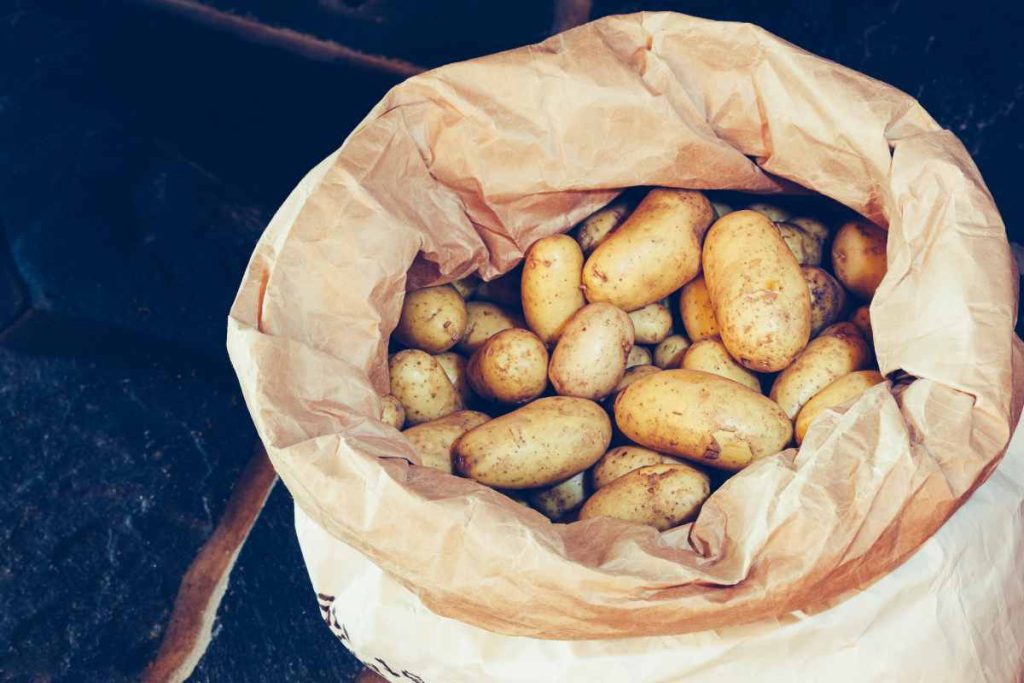
Potatoes are an excellent and easy-to-grow vegetable in the garden that will reward you with an amazing crop of tubers. With either a large planting area or only a balcony, everyone can plant and grow potatoes!
To learn more about potatoes, read our blog on purple and blue potato varieties, and on gourmet potato varieties.
